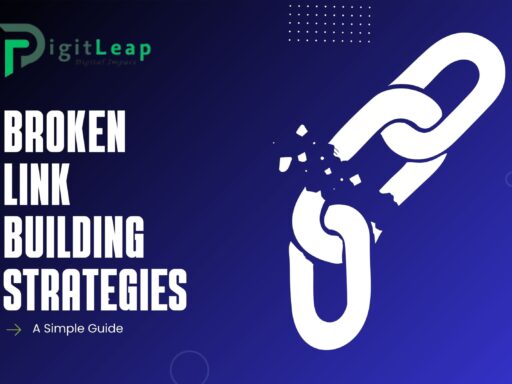Technical SEO Checklist 2024: A Complete Guide
Introduction
In the rapidly evolving world of search engine optimization (SEO), technical SEO is crucial for ensuring that your website performs well on search engines. While content and backlinks are important, technical SEO focuses on optimizing the infrastructure of your site to make it easier for search engines to crawl and index your pages.
This technical SEO checklist for 2024 covers the essential tasks you need to complete to ensure that your website is optimized from a technical perspective. By following this guide, you can improve your search rankings, enhance site performance, and deliver a better user experience.
What is Technical SEO?
Technical SEO refers to the process of optimizing a website’s backend elements—such as site structure, crawling, indexing, and page speed—to improve its visibility on search engines. Unlike on-page SEO, which focuses on content optimization, technical SEO deals with the technical aspects that help search engines understand and rank your site.
A well-executed technical SEO strategy ensures that your website meets the technical requirements for modern search engines like Google. This includes mobile optimization, security (HTTPS), fast loading times, and a clean site structure.
Technical SEO Checklist 2024
Here’s a comprehensive checklist to help you improve the technical SEO of your website:
1. Mobile-Friendliness
With Google’s mobile-first indexing, your site must be optimized for mobile devices. This means ensuring that:
- Responsive design is implemented, so the website adjusts to various screen sizes.
- All content, including images and videos, is viewable on mobile without horizontal scrolling.
- Mobile page speed is fast and optimized.
- Tip: Use Google’s Mobile-Friendly Test tool to check if your site is mobile-optimized.
2. Site Speed Optimization
Website speed is a major ranking factor, and a slow-loading site can hurt both your SEO performance and user experience. For optimal site speed, focus on:
- Compressing images to reduce their size without compromising quality.
- Minimizing JavaScript and CSS files to decrease load times.
- Enabling browser caching and content delivery networks (CDNs) to deliver faster page load times.
- Tip: Use Google PageSpeed Insights to analyze and improve your site’s loading time.
3. Secure Website (HTTPS)
A secure website is essential for both user trust and SEO. Make sure your site uses HTTPS rather than HTTP, as it encrypts user data and secures connections between browsers and your website.
- Tip: Install an SSL certificate and ensure that all pages, including internal links, use HTTPS.
4. Fix Crawl Errors
Crawl errors occur when search engines cannot access your pages. You can monitor and fix these errors through Google Search Console:
- 404 errors: Page not found errors can negatively affect SEO. Set up 301 redirects to guide users and search engines to the correct page.
- Server errors: Ensure your website is consistently available and doesn’t return server errors (5xx).
- Tip: Regularly check Google Search Console for any crawling issues and fix them promptly.
5. Sitemap Optimization
Sitemaps help search engines crawl your site more efficiently by listing all the important pages. Ensure that:
- Your XML sitemap is up-to-date and submitted to Google Search Console.
- It includes only important, canonical pages and avoids duplicate content.
- It is dynamic and updates automatically as you add or delete pages.
6. Robots.txt File
Your robots.txt file instructs search engine bots which pages they can and cannot crawl. Make sure that:
- The file is correctly configured to avoid blocking important pages from being indexed.
- Sensitive pages (e.g., admin panels, personal data pages) are excluded from being crawled.
- Tip: Use the Robots.txt Tester in Google Search Console to validate your settings.
7. Canonicalization
Duplicate content can confuse search engines and harm your rankings. Canonical tags help inform search engines which version of a page is the master copy when duplicate or similar content exists.
- Use the rel=“canonical” tag to consolidate duplicate content and avoid unnecessary indexing.
- Tip: Audit your site for duplicate content and set canonical tags to the preferred URLs.
8. Structured Data and Schema Markup
Structured data helps search engines understand the content of your pages better, leading to enhanced search results like rich snippets. Use schema markup to:
- Mark up important elements such as reviews, product details, events, or articles.
- Ensure that the markup is correctly implemented and doesn’t produce errors.
- Tip: Use Google’s Structured Data Testing Tool to check your markup for errors.
9. Broken Links Audit
Broken links can negatively affect user experience and your SEO rankings. Regularly check for and fix:
- Internal broken links: These occur when pages you link to internally no longer exist or are moved.
- External broken links: Update or remove links pointing to other websites if they lead to broken or unavailable pages.
- Tip: Tools like Ahrefs or Screaming Frog can help you identify and fix broken links.
10. Optimize URL Structure
An optimized URL structure makes it easier for search engines and users to understand the content of a page. Ensure that:
- URLs are short, descriptive, and include relevant keywords.
- Avoid unnecessary parameters or characters in the URL.
- Use hyphens to separate words rather than underscores.
- Tip: Keep URLs clean and consistent across your website.
11. Ensure Proper Indexing
To maximize visibility, it’s crucial to ensure that all your important pages are indexed by Google and other search engines. This can be done by:
- Checking Google Search Console to see which pages are indexed and if any have been mistakenly excluded.
- Using the URL Inspection tool to submit pages for indexing manually if needed.
12. Internal Linking
Internal linking helps distribute link equity across your site and improves the user experience by helping visitors navigate between related pages. To optimize internal linking:
- Link to related content within your website.
- Use keyword-rich anchor text for better SEO value.
- Ensure all pages can be easily accessed within three clicks from the homepage.
13. Pagination and Infinite Scroll
For websites with large amounts of content, pagination can make it easier for users and search engines to navigate through multiple pages. Be sure to:
- Implement rel=“next” and rel=“prev” tags to help search engines understand the relationship between paginated pages.
- If using infinite scroll, provide search engines with a crawlable paginated version of your content.
14. Hreflang for Multilingual Websites
If your website is available in multiple languages, you must implement hreflang tags to indicate the language and region of a page. This helps search engines deliver the correct version of the page to users.
- Ensure correct hreflang implementation to avoid duplicate content issues.
15. Image Optimization
Search engines rely on alt text to understand images on your website. Optimize images by:
- Adding relevant alt text to describe each image.
- Compressing images to reduce load times.
- Using next-gen image formats like WebP for faster loading.
Conclusion
Technical SEO is the backbone of a well-optimized website and plays a crucial role in achieving higher search engine rankings and delivering a seamless user experience. By following this Technical SEO Checklist for 2024, you’ll ensure that your website is not only search engine-friendly but also provides an enhanced experience for visitors.






